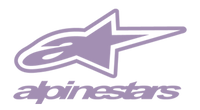You've bought a kart. Congratulations! But what now? Many novice karters wonder what's involved before hitting the track. At KartKings, we're happy to help you get started with a handy checklist, so you can start driving safely, efficiently, and with enjoyment.
1. Where are you allowed to drive?
Most circuits in the Netherlands and Belgium offer free training days. You usually pay a track rental fee of around €40 and can ride all day. Popular circuits include Berghem, Landsard (Eindhoven), Vledderveen, and Pottendijk (Emmen), but circuits like Strijen and Genk offer memberships that allow you unlimited training all year round for a fixed price.
2. What do you take with you to the circuit?
Good preparation prevents a lot of frustration. Make sure you have everything you might need during a training day. Think about:
Kart material:
- The kart itself (check for play, chain tension, tires)
- Fuel (and mixing oil if two-stroke)
- Spare parts (chain, sprocket, spark plug, air filter)
Protective clothing:
- Helmet (homologated)
- Overall
- Gloves
- Rib protector
- Neckband
- Kart or sports shoes
Toolbox (minimum items to bring):
- Socket wrench set (with 8, 10, 13, 17 mm)
- Allen keys (metric)
- Wrenches
- Spark plug wrench
- Screwdrivers (flat and Phillips)
- Pliers, side cutting pliers and water pump pliers
- Torque wrench (optional, for sprockets or wheels)
- Tire pressure gauge
- Chain punch or chain breaker
- Air pump or compressor
- Tie wraps and duct tape
- Oil, grease and brake cleaner
- File or sandpaper
- Kart stand or paddock trolley
- Funnel and jerry can
- Cloths or cleaning roll
Extras:
- Seat lining or padding
- Sufficient drinks and snacks
- Clock or lap timer
- Notepad/logbook for adjustments
3. On the track itself
Once you arrive at the circuit:
- Register at the reception and pay the court rental.
- Find a safe spot in the paddock.
- Do a technical check (brakes, tires, steering).
- Start with a quiet session to check everything.
- Take breaks, check the kart after each session and keep drinking plenty of fluids.
4. Safety first
Safety is essential, especially at higher speeds. Make sure your helmet fits properly, your clothing is in good condition, and consider extra protection like a rib guard or neck brace.
Karting is a fantastic sport, but without preparation, you can quickly find yourself stranded. Use this checklist and be well-prepared for any track.
Looking for a complete starter kit or a fully stocked toolbox? Browse our selection in the webshop or contact us.









